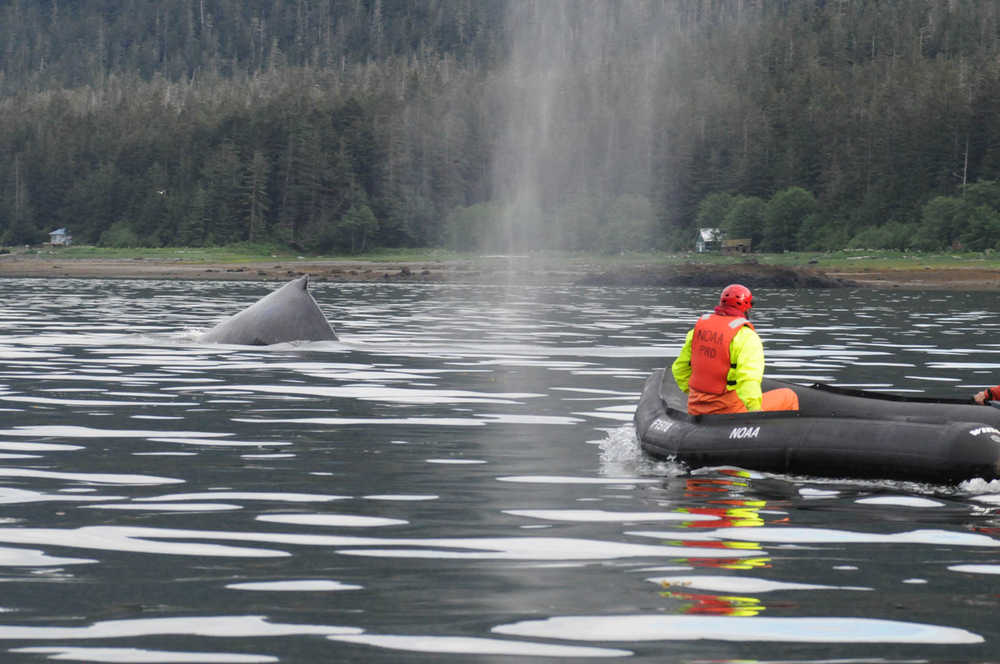Attempts to free an entangled whale started up again Monday morning with the help of underwater cameras to examine the yellow floating line tied to the adult humpback.
National Oceanic and Atmospheric Administration Fisheries spokesperson Julie Speegle said the Alaska Marine Mammal Stranding Network team has followed the 40-foot-long whale to waters near Tenakee Springs, approximately 50 miles southwest of Juneau.
The team, which specializes in freeing mammals from ocean debris, will use underwater cameras to analyze the 150 feet of line that is also dragging one orange and one pink buoy near the whale.
The video recordings could also help rescuers figure out why a second adult whale is traveling alongside the entangled whale, which was first spotted Wednesday in Seymour Canal on the east side of Admiralty Island.
[NOAA is searching for an entangled humpback whale near Juneau.]
“We don’t know if the other humpback is swimming alongside to keep the entangled humpback company, or if it is also entangled,” Speegle said.
The humpback’s entanglement garnered a lot of attention over the week, beginning Wednesday during NOAA’s first attempt to free the whale from the line, then during a second rescue attempt on Saturday. Coast Guard Station Juneau boat crews could be seen Saturday near Sandy Beach, trying to aid NOAA’s efforts to free the whale. Spectators near the beach could see the whale spouting water and several people took to social media to group-track the whale, updating posts with where the whale was last spotted.
Weather ultimately prevented the team from untangling the whale and the team paused their efforts around 9:30 p.m. Saturday, although they were able to attach a locator buoy to the whale.
On Monday, Speegle said responders reported the whale can still breathe fine and is travelling well, however, the companion whale is complicating efforts to free the entangled one. The job could take multiple response attempts over days or weeks to complete, with the whale’s location and weather both playing a critical role. For now, responders near Tenakee Springs report that weather conditions are fair for the underwater video cameras.
According to NOAA, marine mammal entanglement causes the deaths of hundreds of thousands of mammals worldwide, with entanglements as the primary way humans directly affect the mortality of humpback and grey whales.
In Alaska waters, NOAA has received more than 130 confirmed reports of entangled large whales since 1998. NOAA estimates the number of actual animals entangled is much greater because entanglements often go unreported. According to a report from 2007, 78 percent of the large whale population in Southeast Alaska have scars indicating entanglement.
“‘Tis the season, definitely,” Speegle said of entanglements in Alaska waters. “There is usually an increased number of reports during the summer season.”
—
Related stories:
Necropsy completed on whale found on bow of cruise ship
NOAA’s Whale SENSE program reaches 1-year anniversary

